About 20 miles north of Ha Noi, visiting this rural village requires a ferry ride across the Nhu Nguyet River. The main industries here are making rice paper and raising pigs.
Rice paper can be very thin, like you might use for wrapping spring rolls, or thicker, in which case it can be toasted and eaten like a cracker. These days rice paper is commonly made using a machine, but we saw the process for making it by hand. A rice slurry is poured onto a steam table, similar to making a crepe. Then, whether it's by machine or by hand, as soon as the rice heats up and starts to thicken, the wet 'paper' is transfered to a bamboo panel to dry. (Either as a long strip, or as a hand-made circle.)

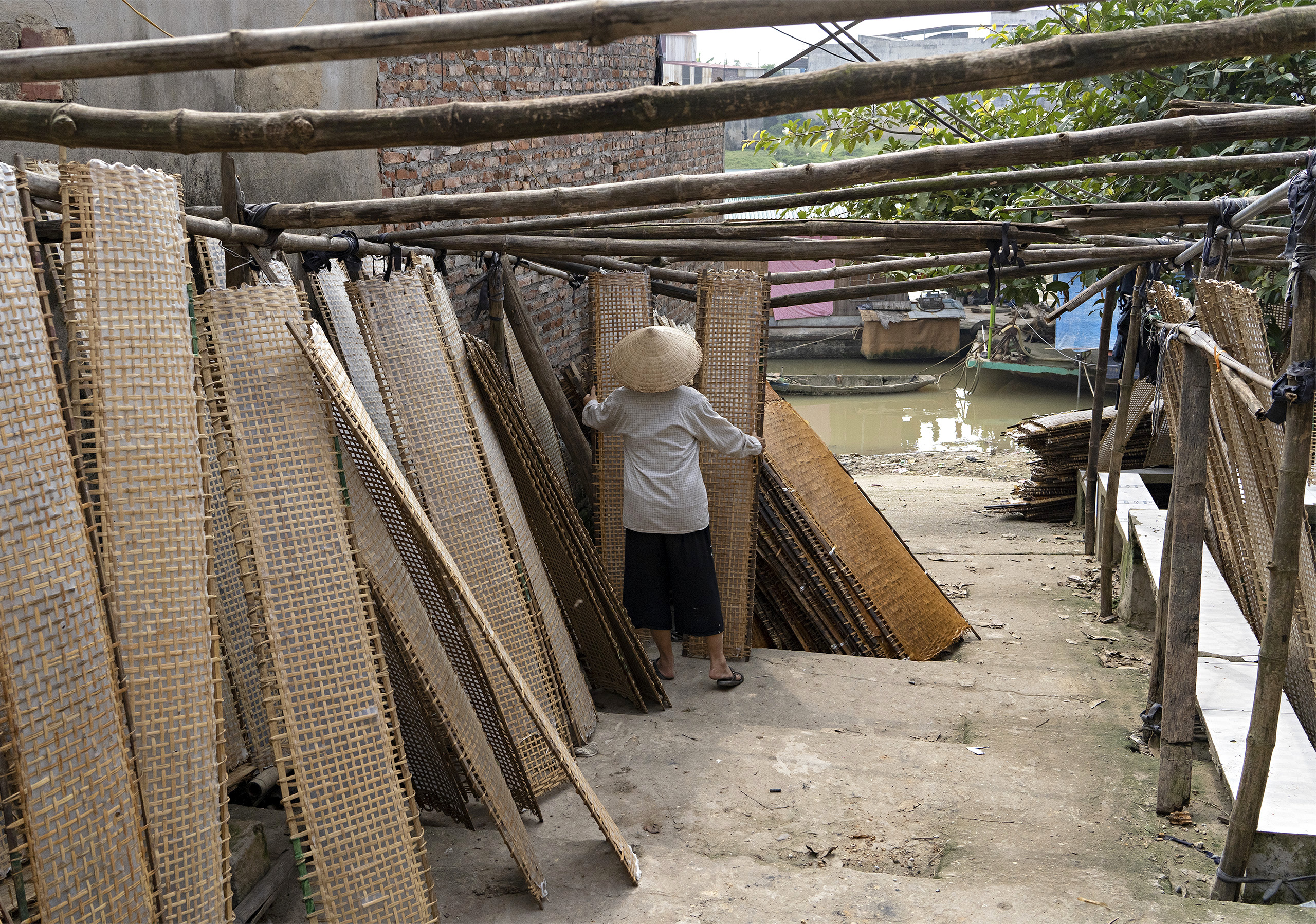
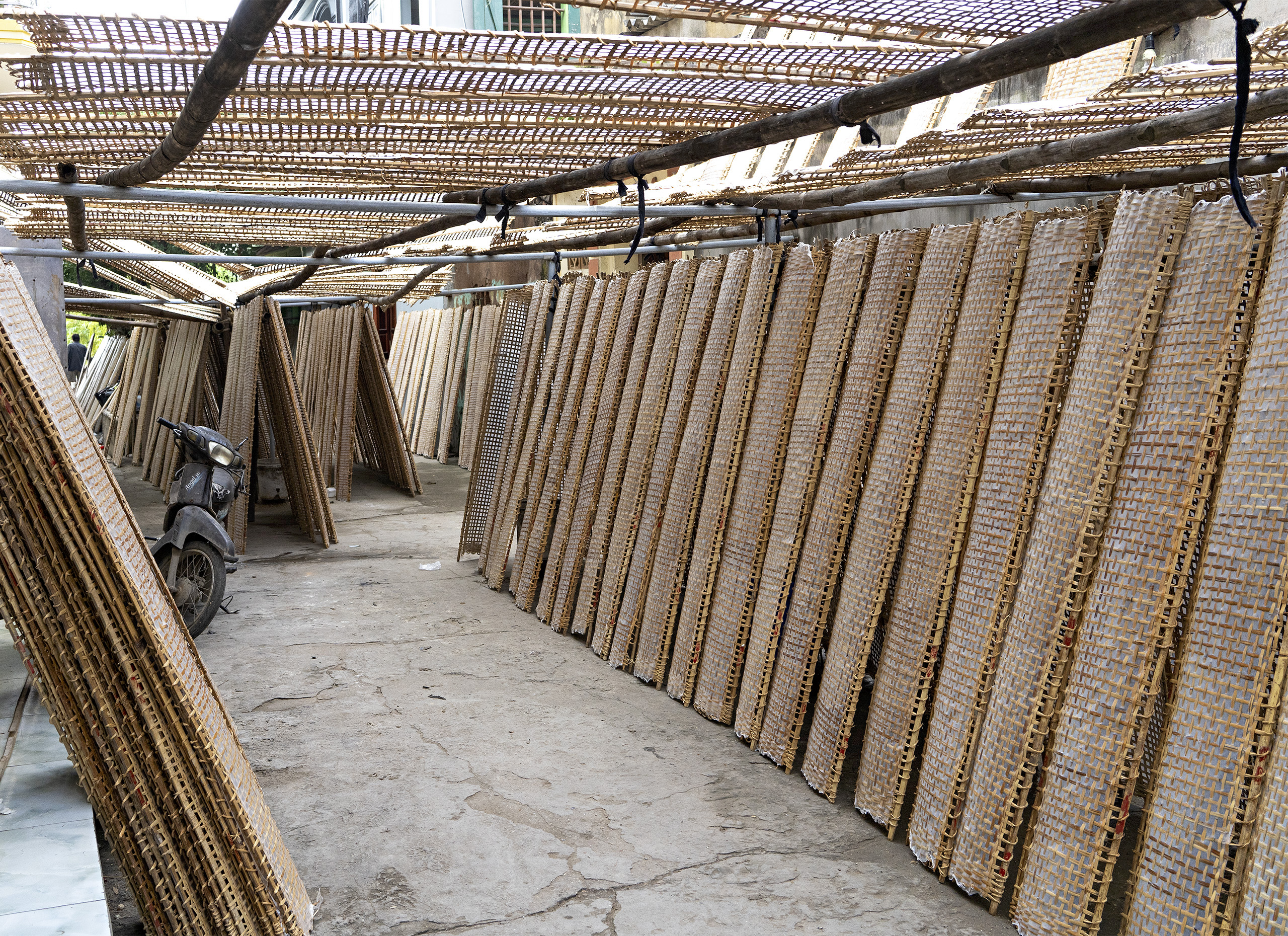
After our rice paper demonstration, we went inside this woman's house to have a cup of tea and meet her husband. He had this huge jar of rice liquor over in the corner. Three years these snakes have been marinating! Despite much encouragement, I couldn't bring myself to try it.
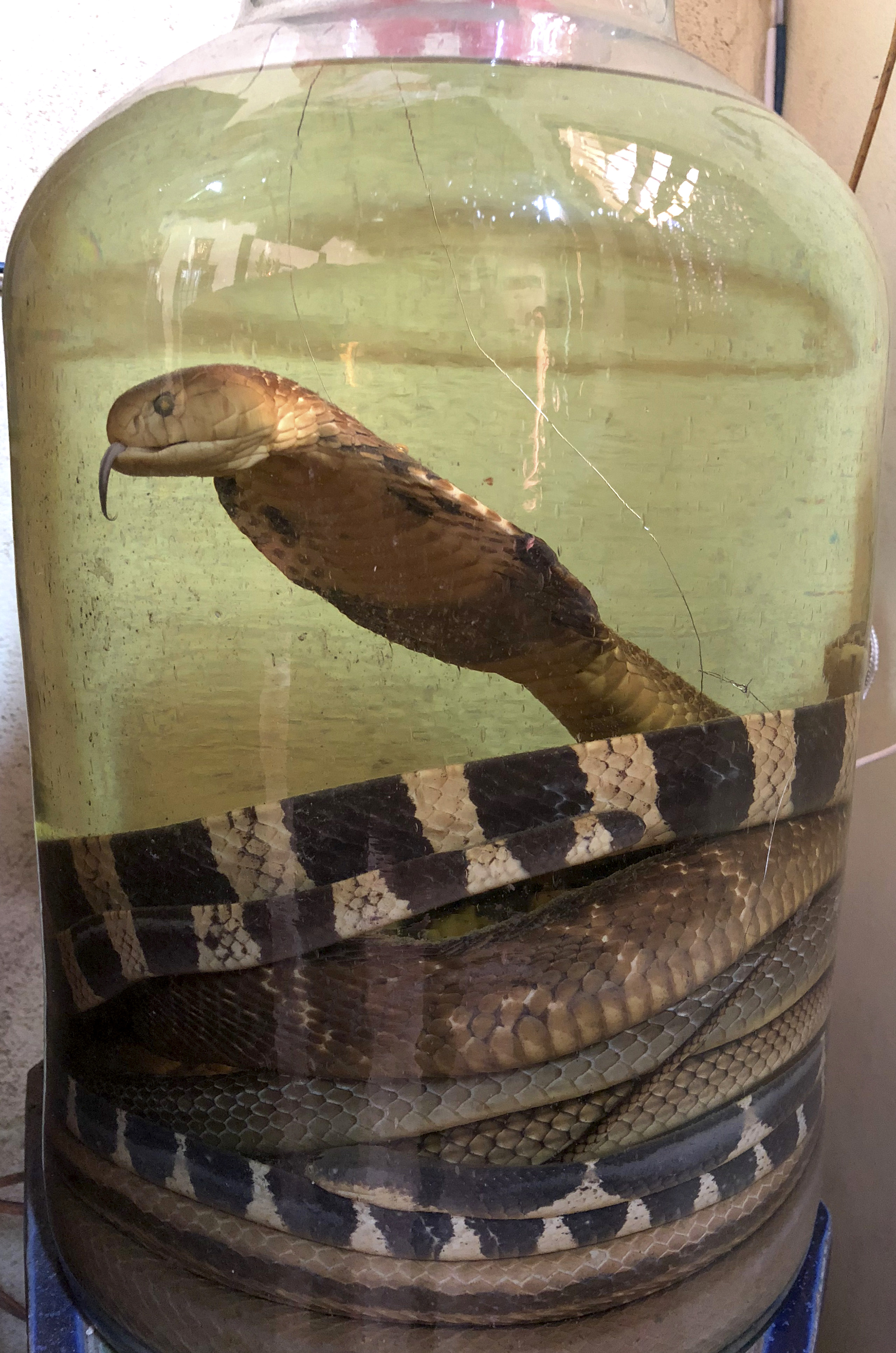
Here's a woman toasting thick rice paper. These circles were dried, coated with a sugar syrup, and then sprinkled with coconut flakes and sesame seeds. They also make a savory version. Either way, the toasted circles are broken up into crackers.

Walking along a dike, on the way to the river, we saw a husband and wife harvesting rice. Their lot is probably just the section in the foreground, where the rice has been knocked down.
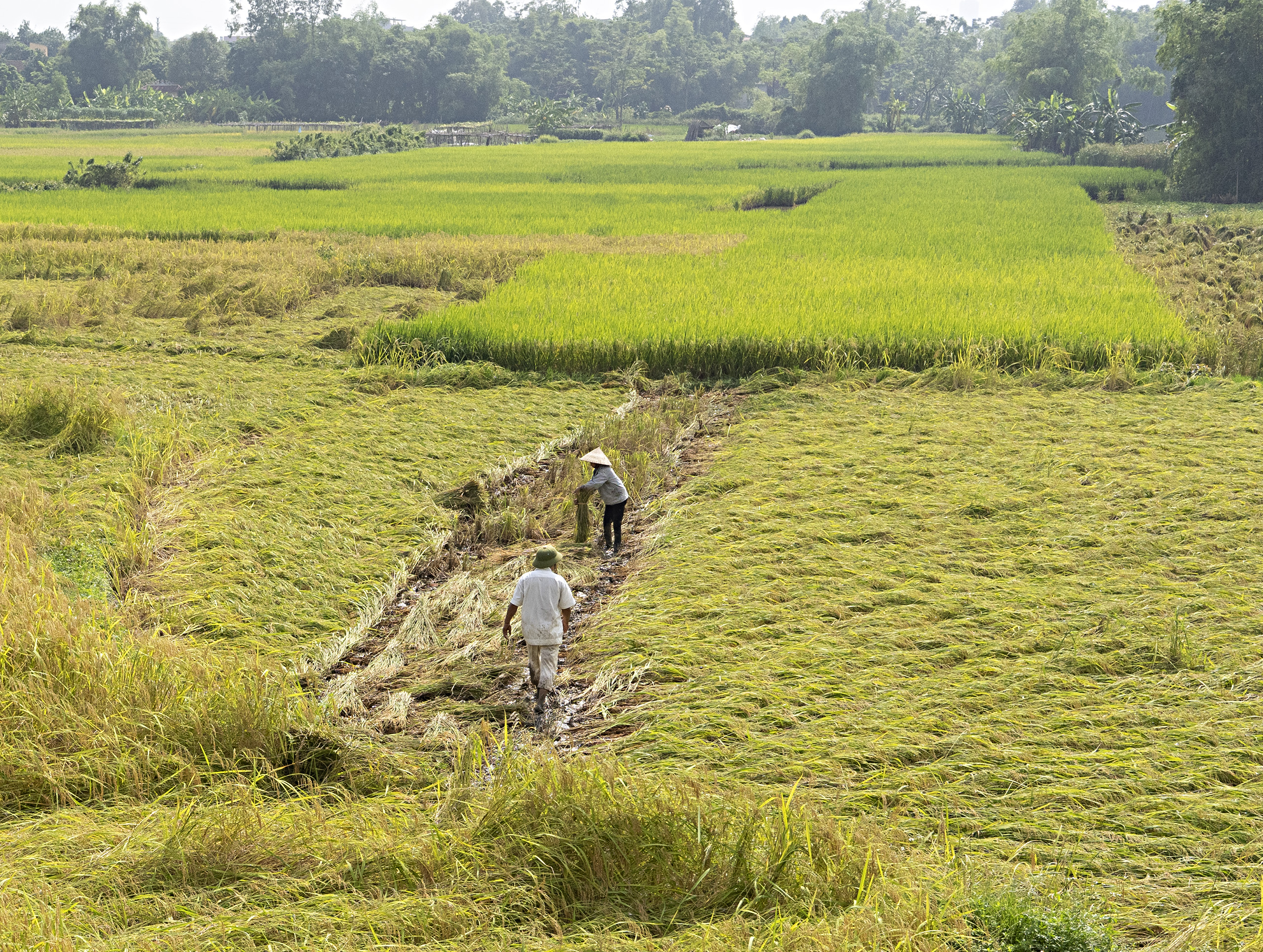
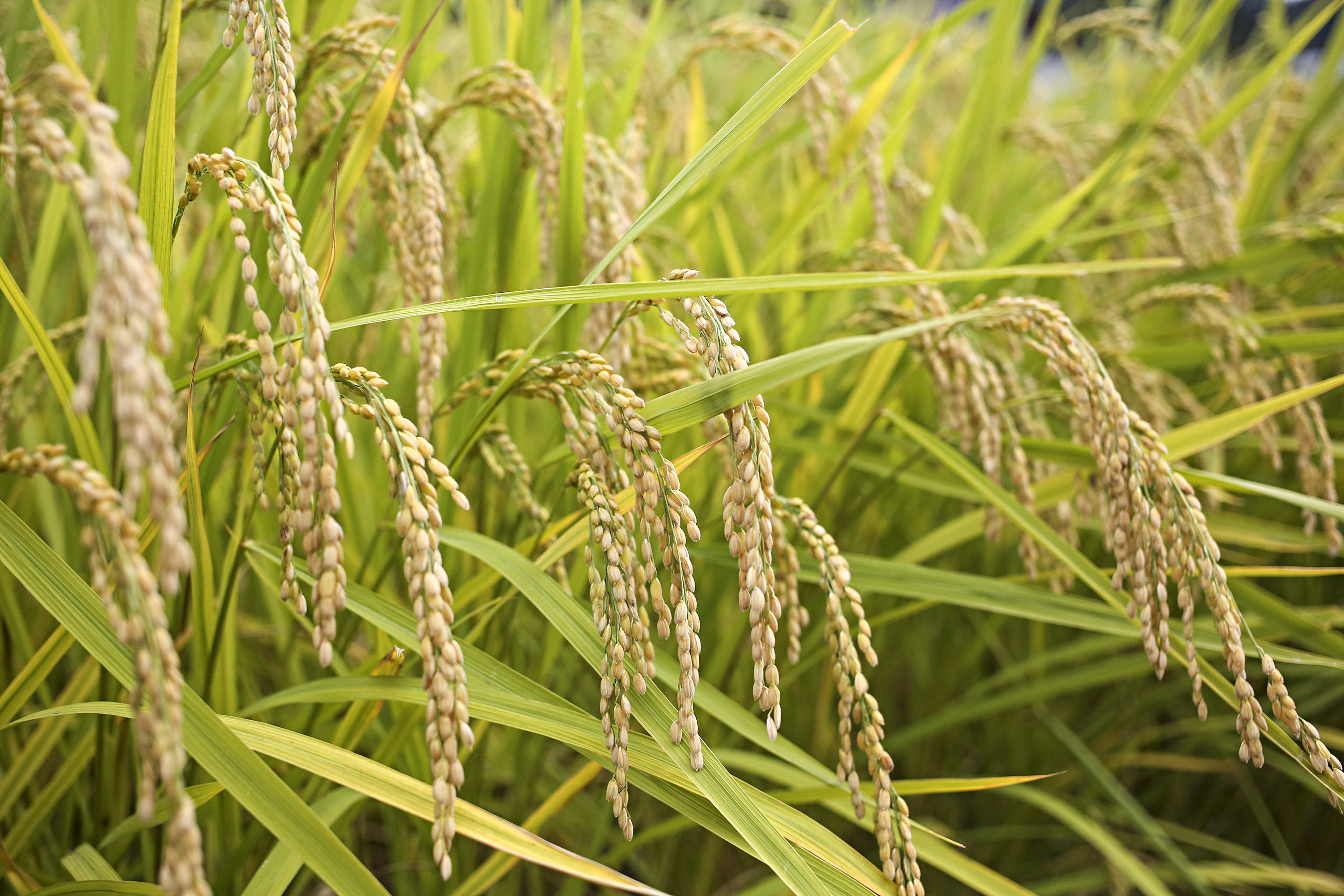
Many times we saw people drying rice on their driveway, if it was paved, or on a big blue tarp. Our guide explained that this is probably their household rice supply rather than something they planned to sell. Once the kernels have dried, most people would take the rice to a commercial mill to strip away the husks. You can see why it's so important to rinse rice before you cook it, everyone was very casual about walking on the rice while it was drying.
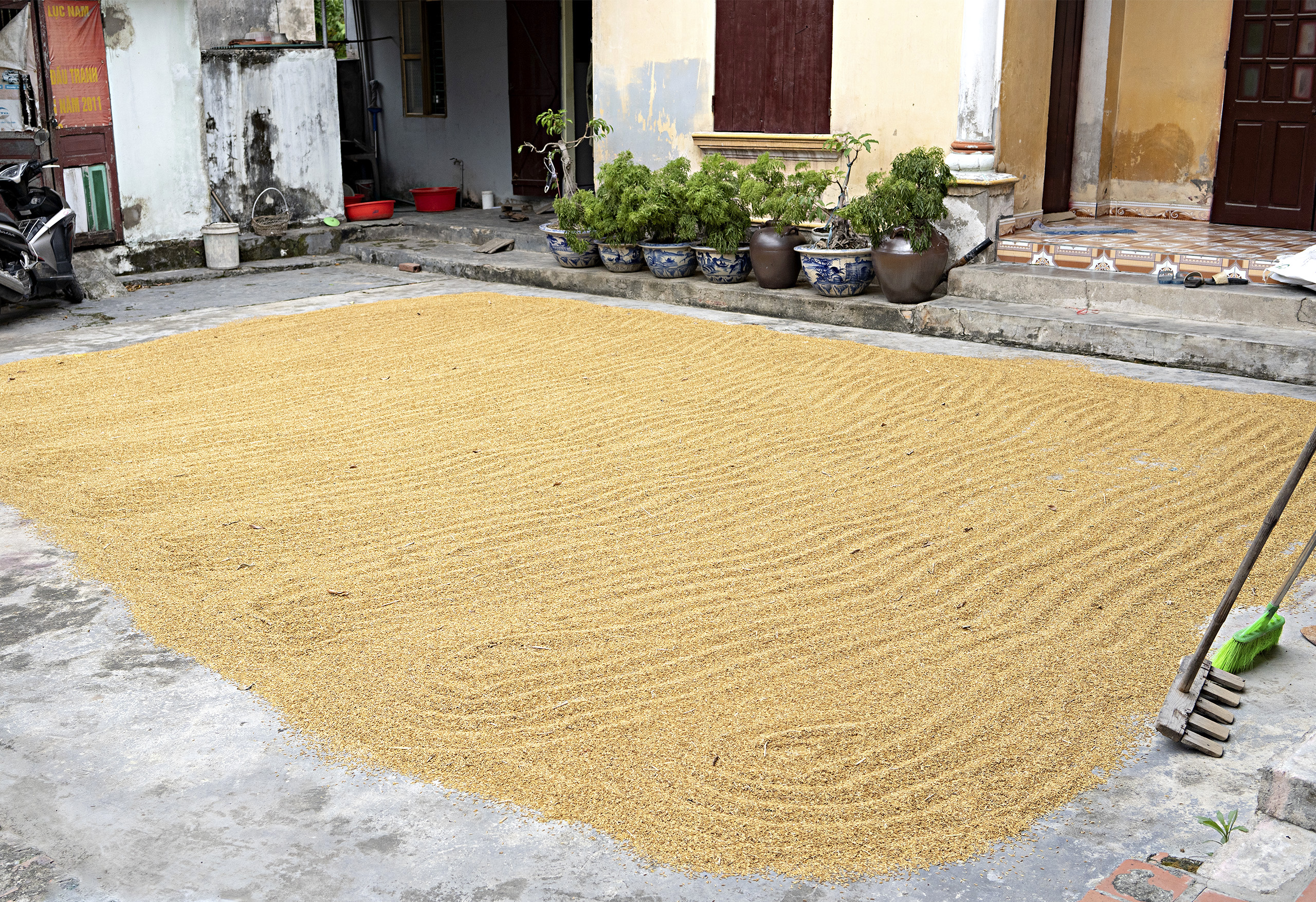
Another interesting thing we saw in this village were these small caskets. In this case the homeowner has used some rejected or leftover caskets to make a garden wall. The last picture shows some new caskets in storage.
The funeral tradition in North Viet Nam is that the deceased is not embalmed, and the body is buried for three years. This is approximately the period of mourning. (The mourning period is calibrated to your relationship with the deceased. A cousin, for example, is mourned for nine months.) After three years, the body is exhumed, the bones are cleaned, and then they're arranged neatly in one of these small boxes. Only then are the remains buried in their final resting place!

